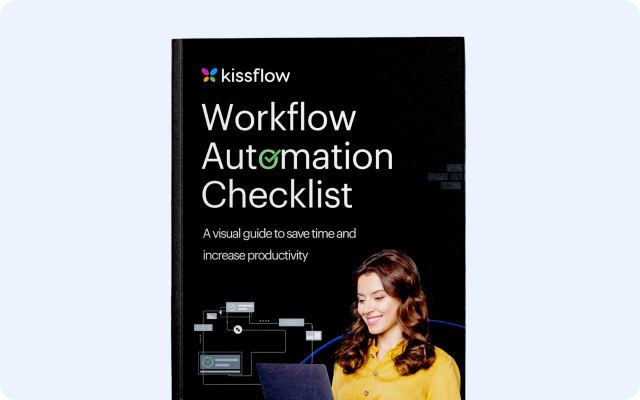Related Articles

I've watched too many enterprises buy expensive automation platforms and then struggle to see any measurable outcomes. They invest hundreds of thousands in licenses, spin up pilot projects, and then... nothing changes.
The issue? Most projects focus on deploying technology without rethinking how work actually gets done.
Hyperautomation is not a product you install. It's a strategic service-led approach that blends tools, expertise, and cross-functional collaboration. CIOs know that tools alone can't clear the IT backlog or support business agility at scale.
Here's the reality: Only 35% of businesses accomplish their digital transformation objectives, and 26% of senior executives cite high costs as a major obstacle. The difference between success and failure? A service layer that brings clarity, alignment, and execution rigor.
That's where hyperautomation services come in, bringing together expert consultation, platform capabilities, and implementation best practices to address real business problems.
While platforms provide the technical backbone, services address the people, process, and strategy aspects. Comprehensive hyperautomation services typically cover:
Before automating anything, you need to identify which workflows to prioritize. 50% of organizations are challenged by the complexity of business processes.
Service providers use process mining, interviews, and internal data to surface:
Every enterprise has a unique tech stack. 61% of organizations cite integration with existing processes as their top automation challenge.
Services ensure the hyperautomation platform (like Kissflow) integrates cleanly with existing ERP, CRM, or HRMS systems using APIs, RPA bots, or native connectors.
Based on identified use cases, service teams help build scalable workflows, define data models, and set up automation logic using the platform's low-code/no-code capabilities.
Smart workflows depend on insight. Services configure AI-based steps like document classification, sentiment detection, or predictive routing within each process.
To avoid creating new risks, services help IT teams enforce:
Even the best workflows fail without adoption. 54% of employees feel unprepared to handle changes brought by new technologies.
Services drive onboarding, train users, and equip teams to make changes without depending on IT.
CIOs across industries face growing demands from business units. 72% of IT leaders report being blocked from strategic work due to project backlogs.
How services help:
Kissflow Insight: In organizations with 1,000+ employees, clearing just 5-10 backlogged apps can unlock millions in operational value.
Many enterprises deploy automation in silos. RPA for finance. BPM for operations. Custom apps for sales. This creates fragmentation with no end-to-end visibility.
How services help:
Kissflow Insight: Kissflow unifies workflows, data, and user roles under a single workflow automation platform, reducing tool sprawl and maintenance overhead.
In the absence of support, business users create workarounds using spreadsheets, shared folders, and email threads. These lack governance and break easily.
How services help:
Kissflow Insight: 48% of organizations now recognize the value of citizen developers. Citizen development thrives when governed well. Kissflow provides a controlled space for business users with IT oversight.
Traditional automation struggles to adapt. A new approval rule or form change requires developer intervention or system downtime.
How services help:
Kissflow Insight: With Kissflow's low-code/no-code builder, workflows change in minutes, not weeks, without breaking compliance or integrations.
Success lies in identifying high-value workflows that drive immediate ROI:
80% of finance leaders have implemented or plan to implement RPA.
69% of daily managerial operations will be automated by 2024.
In all these scenarios, Kissflow services reduce cycle time, increase transparency, and improve user experience without overhauling core systems.
Kissflow supports service-led execution in several ways:
Co-led by Kissflow solution consultants and implementation partners to assess pain points, backlog, and department priorities.
Includes process mapping, cost-benefit analysis, and suggested automation roadmap based on business impact.
Workflows are implemented using Kissflow's platform. Business users are trained on building and modifying workflows using visual tools. 72% of low-code users build and launch apps in under three months.
Role hierarchy, access control, reusable components, and reporting structure configured to maintain centralized control.
Service teams review workflow metrics, suggest improvements, and identify new automation opportunities.
Most automation failures happen not because the tool is weak but because the approach lacked structure. Hyperautomation services fill that gap.
They bring process understanding, platform expertise, and change management into one cohesive motion. When paired with a flexible platform like Kissflow, services ensure automation is not just deployed but adopted, optimized, and scaled.
Digital transformation spending reached $2.5 trillion in 2024 and is set to reach $3.9 trillion by 2027. The companies capturing this value are those investing in both technology and services.
If your goal is to improve operations without adding complexity, hyperautomation services with Kissflow provide the structure, speed, and flexibility your teams need.

Related Articles
Welcome.
Let's get started.
To begin, tell us a bit about yourself
By proceeding, you agree to our Terms of Service and Privacy Policy
"The beauty of Kissflow is how quick and easy it is to create the apps I need. It's so user-friendly that I made exactly what I needed in 30 minutes."
Oliver Umehara
IT Manager - SoftBank
A Trusted Choice for Companies Globally




Thank you for signing up
Someone from our team will contact you soon.

Know why all the IT leaders converging at booth #602
Earn a chance to be part of our experience event

Get the first look at the 2025 CIO Trends report
Welcome.
Let's get started.
By proceeding, you agree to our Terms of Service and Privacy Policy
Wondering where to start?
Let's talk!
Connect with our solution experts to gain insights on how Kissflow can help you transform ideas into reality and accelerate digital transformation

This website uses cookies to ensure you get the best experience. Check our Privacy Policy
